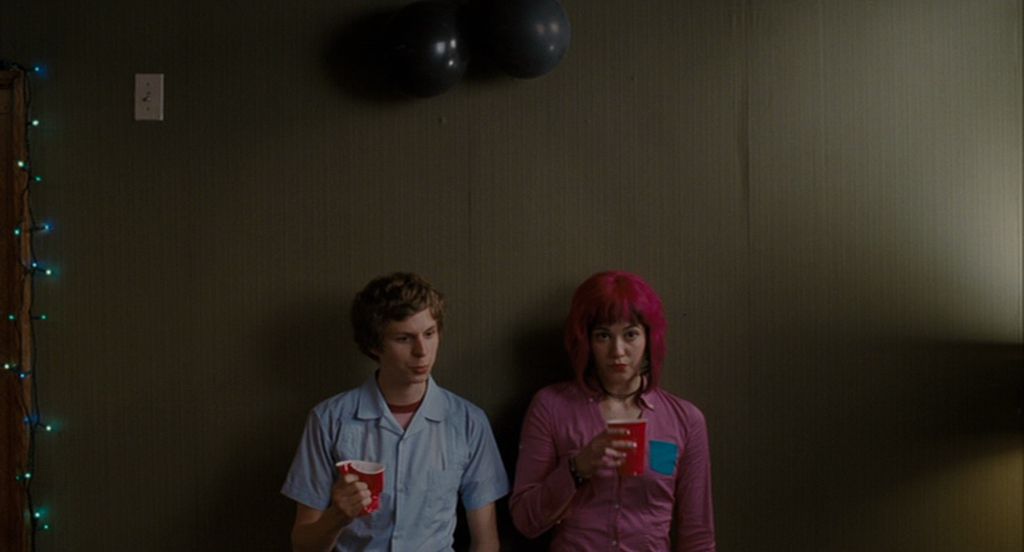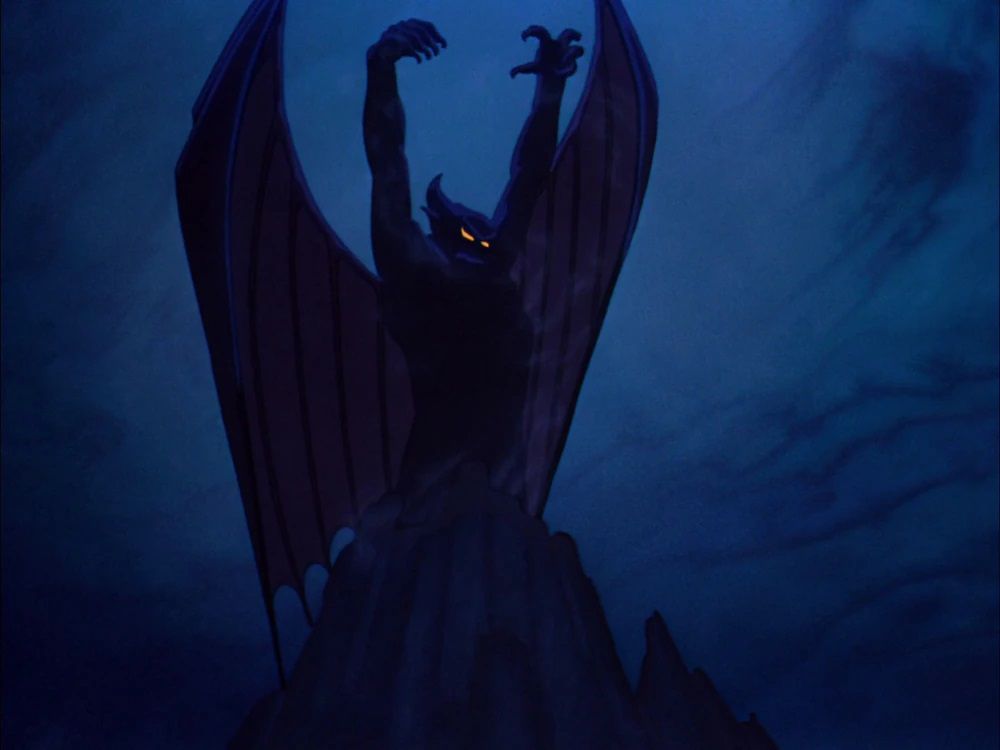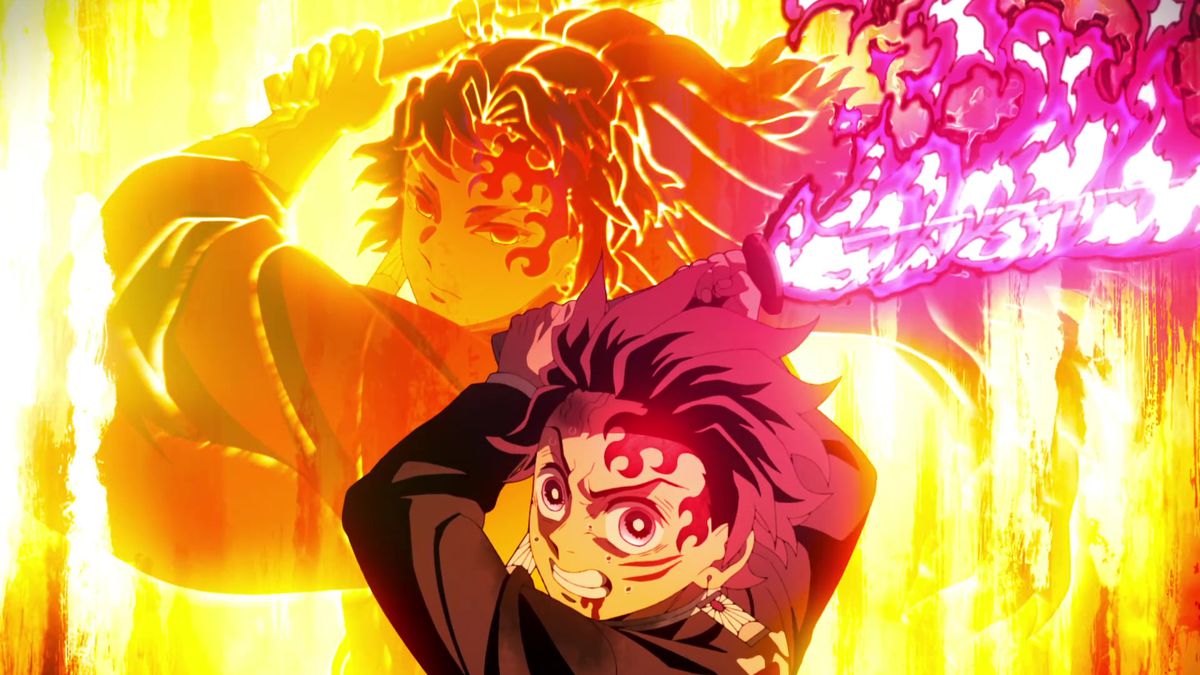At first glance, Five Nights at Freddy’s seems like an odd property to become a pop culture phenomenon. A robust display at Hot Topic, sure. A video game about a security guard attempting to survive multiple nights at an abandoned Chuck E. Cheese-style restaurant beset with possessed animatronics has the requisite goth-kitsch merch inspiration.
But Freddy’s has expanded into so much unexpected pop culture real estate — a full game series, indie game imitators, books and graphic novels, toys and collectibles, an energetic movie rip-off — that the new feature film version feels long overdue, even though the first game only dates back to 2014. Taken by itself, the movie shouldn’t be able to withstand the level of hype fans have brought to it. And yet it might stand up to expectations — not because of its merits as a kid-accessible PG-13 horror movie, but because of the way it unexpectedly converges decades’ worth of popular culture into a single feature.
Before the story even gets going, Five Nights at Freddy’s sets up a nostalgic hall of mirrors. The titular pizza-and-games establishment is modeled on ’80s entertainment centers like Chuck E. Cheese and ShowBiz Pizza. But the movie isn’t set in the 1980s, or even in 2014, when the first game launched. According to a flash of security footage, it appears to be set in the year 2000. Though that might seem like an arbitrary play to avoid cell phones and widespread use of Google, the setting becomes increasingly appropriate as the movie goes on.
:no_upscale()/cdn.vox-cdn.com/uploads/chorus_asset/file/25035577/DarkLoom.jpg)
Mike (Josh Hutcherson) doesn’t have time for childhood nostalgia, though. He takes the job at Freddy’s out of desperation. He’s acting guardian to his much younger sister, Abby (Piper Rubio), and though he’s loath to work nights for that reason, he’s worried that their conniving Aunt Jane (Mary Stuart Masterson) will take custody of Abby if he can’t bring in some money. He’s also worried that Jane might actually provide better care for Abby than he can, even though he suspects she’s just angling for the government assistance she’d get as primary caretaker.
Mike’s spotty employment record and unresolved mental health issues from a lingering childhood trauma make him a risky hire, so he takes what he can get from a peculiar career counselor (Matthew Lillard) and reports for duty at the long-closed Freddy’s. It’s quietly creaky at first. Then the seemingly abandoned animatronic animal mascots — Freddy, Bonnie, Chica, and Foxy — start to show unsettling signs of life.
This all sounds like the material of a campy horror-comedy gorefest. But in spite of some jump scares and a few semi-gnarly PG-13 kills, Five Nights at Freddy’s spends a lot of time actively avoiding opportunities to wring tension from this creepy-funny situation. A sequence where Mike learns the truth about the creatures (game aficionados or anyone who watched the trailer will already know the big secret) is weirdly underplayed, and not for the sake of a punchline. It’s just immediately subsumed into a convoluted soap opera, connected to Mike’s traumatic backstory involving his brother’s disappearance.
The flashback material addressing this tragedy is also weirdly tension-free, and confusingly staged by director Emma Tammi. Jim Henson’s Creature Shop provides impressively tactile-looking puppets, but the movie doesn’t put them to any visceral use.
:no_upscale()/cdn.vox-cdn.com/uploads/chorus_asset/file/25035578/Hook.jpg)
Newcomers may be dismayed to realize that Tammi doesn’t seem especially interested in leaning into the horror aspects of Five Nights at Freddy’s. But she has turned into a surprisingly comprehensive compendium of 21st-century culture. The streamlining of a complicated backstory recalls the comic-book movies that have ruled the box office for the better part of two decades. The straight-faced faithfulness to material that could have been goofier brings to mind the YA movie adaptations of the 2000s and 2010s, especially the similarly teen-friendly horror-fantasy of Twilight. (It helps to have Hunger Games co-star Hutcherson along for the ride.) Even smaller details recall other pop culture of our young century, like how the animatronics’ eyes narrowing in suspicion look a lot like a similar move on Family Guy.
Family Guy is also a show fairly obsessed with ’80s arcana; its breed of referential throwback has been a feature of popular culture since around the time of Freddy’s 2000 setting, most recently in Netflix’s smash Stranger Things. The very idea of a horror movie with such kid appeal (whether it was intentional from the game’s outset or not) feels like an outgrowth of the various attempts to recapture that ’80s Amblin magic, crossed with memories of that era’s kids on the playground excitedly talking up the forbidden adventures of Jason and Freddy, hungering for something more dangerous than Spielberg-adjacent wonder. In the 21st century, that horror friendliness has gone mainstream, with far more Freddy’s merch than just the occasional Freddy Krueger doll we got in the actual ’80s.
In combining ’80s nostalgia with more recent touchstones, the movie version of Five Nights at Freddy’s plays like the cultural smorgasbord of YouTube come to life. From the premise on up, it’s a natural outgrowth of the online rabbit holes the site offers, inviting viewers to peruse old Chuck E. Cheese ads or feature-length documentaries about animatronic bands. (The movie even has Mike watching a training video on VHS, exactly the kind of thing that gets salvaged by enterprising streaming collectors.)
:no_upscale()/cdn.vox-cdn.com/uploads/chorus_asset/file/25035582/Grind.jpg)
So it’s natural that the franchise has expanded beyond games to become an online experience, with vast networks of video explainers, online playthroughs, and fan art — hence the movie’s cameos from multiple YouTubers, including game and film theorist MatPat playing a waiter at a diner, and Five Nights fan CoryxKenshin having a less animated reaction to one of the animatronics than he might during an online playthrough.
Internet culture existed before this century, of course, but it was well into the 2000s before it converged so relentlessly with other media. In theory, if not always in practice, the movie rolls together horror, fantasy lore, animation, interactivity, and meme comedy, all remixed with multiple layers of nostalgia, bringing together people old enough to remember ’80s kitsch and young enough for even 2000s-era culture to feel like the distant past. This isn’t just a display in Hot Topic; this is the whole store.
The movie’s convergence of youth culture doesn’t make it especially good, but it does help explain why it shows so little familiarity with the affairs of mere humans. In the context of Freddy’s creating its entire world out of pop culture signposts, it’s more understandable that the movie’s characters are untethered from any sort of basic reality, or each other.
That aspect of the movie is most obvious in its family dynamics. Hutcherson, the actor playing Mike, is 31; the character’s age is unclear, though to mitigate the uncommented-upon weirdness of Mike having a much younger sister he feels unqualified to raise, he would have to shave a full decade off that number. Even that math doesn’t offer an easy fix. Based on her dialogue and her drawing skills, Abby seems like she’s around 8. But based on her extremely intermittent education, which takes place at what looks more like a daycare facility or a rec center than a school, the possible range widens. Is she supposed to be 5? 10? The movie doesn’t seem to know or care.
Even stranger, Mike and Abby’s parents aren’t both dead. Only their mother has actually passed away, and though Mike describes them as the kind of “perfect parents you’d see on a TV show,” their father’s absence is hand-waved as him being simply unable to cope with the family’s losses. No one even seems particularly put out by the monumental betrayal of this man sticking his 20-to-30-year-old son with his 5-to-10-year-old daughter and disappearing forever. (The game-related reasons that keep Mike and Abby’s father off screen seem nearly impossible in the movie’s story.) For that matter, the idea that Aunt Jane wants to take custody of Abby in order to collect a government check is pretty nonsensical; Abby would probably need to be in state custody for Jane to serve as a paid foster parent.
:no_upscale()/cdn.vox-cdn.com/uploads/chorus_asset/file/25035585/Cop.jpg)
That might sound like nitpicking, but Five Nights at Freddy’s is littered with these kinds of emotional and logistical implausibilities well before it gets to the actual fantasy stuff. There isn’t a single character here who seems like they could exist outside of their prescribed scenes. In particular, friendly cop Vanessa (Elizabeth Lail) has all the depth and shading of an extremely minor game NPC. She fits comfortably into a movie that feels like it’s been machine-learned and reverse-engineered from YouTube fanfic, rather than rooted in any kind of recognizable human experience, behavior, or psychology.
To some extent, that resonance with the most straightforward and service-driven fan work is probably the point. The movie has more utility as a shared experience for fans and a souvenir for YouTube mining than as a narrative, not so different from Taylor Swift’s hit concert film The Eras Tour. (Though Swift would neither skimp on the spectacle to the degree FNAF does, or let through a snarky, redundant line like “Well, that went well” without a redraft.) The movie is also a canny exploitation of certain younger kids’ fascination with horror — remixing the game with so many other familiar online elements could ease them into a sometimes forbidden genre.
Then again, it’s equally possible that Five Nights at Freddy’s will just create a feedback loop of further lore, continuing to burden the poor human actors tasked with bringing it to life. The movie’s funniest line is unintentional, when Mike earnestly explains, “I’m having a hard time just processing everything that’s happened,” as if he’s working through a tough breakup rather than a series of increasingly bizarre animatronic attacks. He’s right, though. For a movie with such a simple, appealing premise, Five Nights at Freddy’s is a lot to process.
Five Nights at Freddy’s is in theaters and streaming on Peacock starting Oct. 27.








